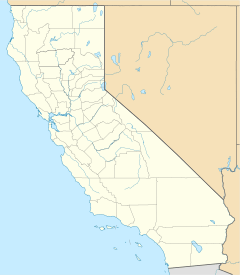Remington Hill, California facts for kids
Quick facts for kids
Remington Hill
|
|
|---|---|
|
Former settlement
|
|
| Country | |
| State | |
| County | Nevada County |
| Elevation | 4,052 ft (1,235 m) |
Remington Hill was a historic mining camp in Nevada County, California. It was a busy place in the second half of the 1800s. The camp was named after Caleb Remington, a well-known local miner. He lived mostly in a nearby area called Little York. Remington Hill was located high up, at about 4052 feet (1235 meters) above sea level. You could find it near what is now Chalk Bluff Road. It was about one mile south of Highway 20.
Contents
A Look Back at Remington Hill
Not much is known about the early days of Remington Hill. In 1854, it was described as a very active mining camp. By 1855, about 75 people lived there. By 1858, people could travel to Nevada City by stagecoach. A stagecoach was like a large horse-drawn bus.
In early 1859, a big snowstorm hit the area. It damaged many homes and businesses. This included a hotel, a stable, and a place where meat was prepared. Remington Hill did not have its own school or post office. Residents got their mail from a place called Red Dog. Children went to school in a nearby area called Lowell Hill.
Some important people lived in Remington Hill. Caleb Remington owned several mines and mills. He was also involved in local government. He tried to become the county sheriff in 1854. Another important person was John Timmons. He helped build water systems for mining.
Remington Hill almost disappeared in 1902. A large fire burned for about two weeks. It destroyed many trees and homes. The fire covered a huge area before it was stopped.
Gold Mining at Remington Hill
Remington Hill was located on a special path of gold-filled gravel. This path was on Chalk Bluff Ridge. This ridge is between Steep Hollow and Greenhorn Creeks. These creeks flow into the Bear River. Remington Hill became a key spot for two types of gold mining. These were hydraulic mining and drift mining.
How They Mined for Gold
Hydraulic mining used powerful jets of water. These jets washed away gravel to find gold. Water for this mining came from Steep Hollow Creek. A 16-mile long ditch was built to bring the water. This ditch was made between 1854 and 1857. People in the town were proud because very large gold nuggets were found nearby.
Drift mining was another method. Miners dug tunnels underground. They followed the gold-filled gravel channels.
The End of Hydraulic Mining
Hydraulic mining stopped in the early 1880s. This happened because of new laws. These laws banned miners from dumping "tailings" into rivers. Tailings are the leftover gravel and dirt after gold is removed. These tailings were polluting the Bear and Yuba Rivers. It was later estimated that a huge amount of gravel was dug up from Remington Hill.
Drift mining continued to be profitable in the area. It went on into the early 1900s. Sometimes, it even happened after that. Today, there are no buildings left of the old town. However, you can still find Remington Hill on many digital maps.


